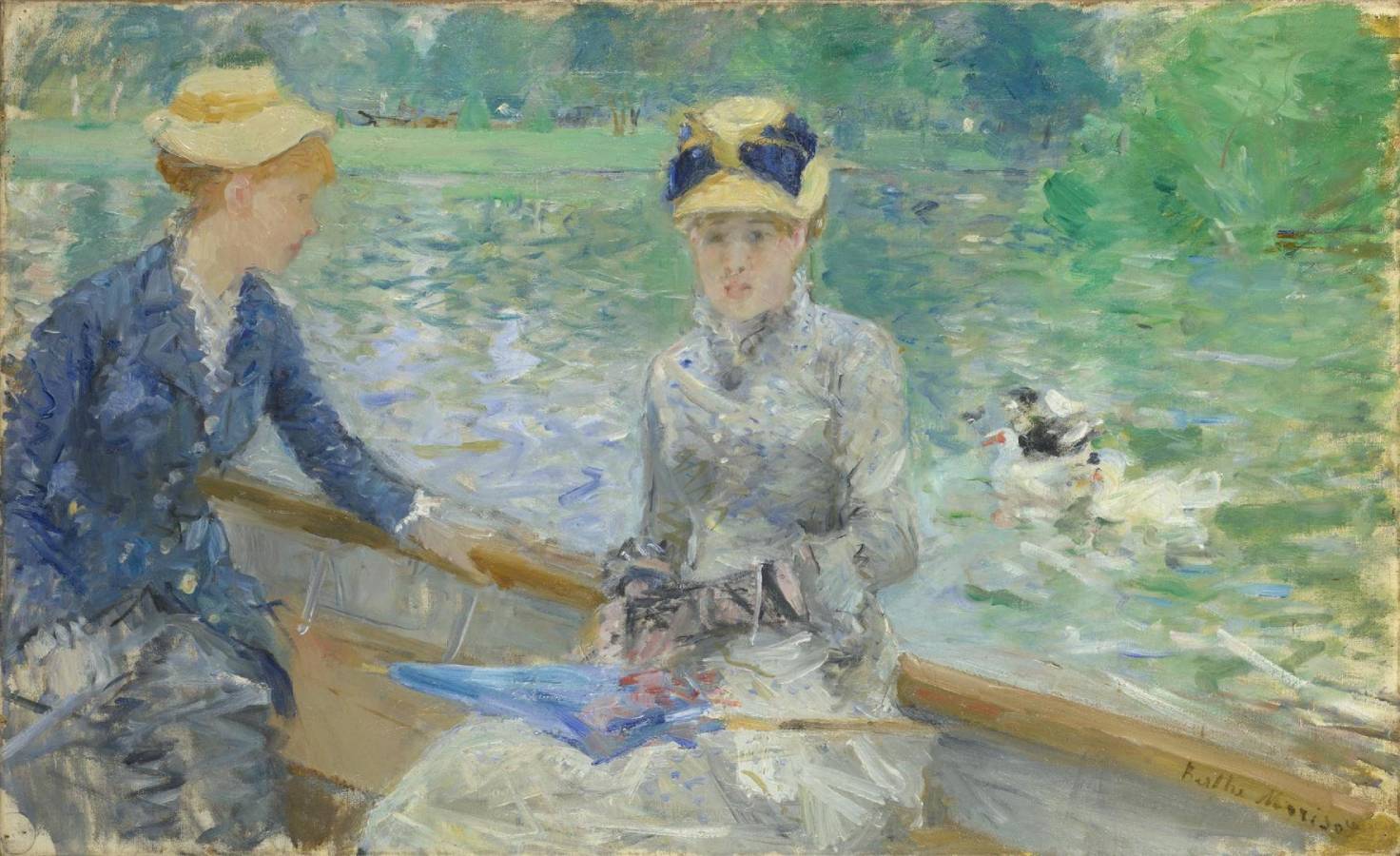Morisot, Berthe (1841-1895)
Jour d’été (Summer’s Day)
c.1879
Oil on canvas, 45.7 × 75.2 cm
National Gallery, London
This painting was almost certainly exhibited with the title The Lake in the Bois de Boulogne at the Fifth Impressionist exhibition in April 1880 together with another picture by Morisot, In the Bois de Boulogne. The paintings show the same two women (possibly professional models) who wear identical clothes in both pictures. A watercolour study for Summer’s Day (location unknown) was very likely completed on site at the lake, but the final painting was probably executed, in part at least, in the studio with Morisot perhaps posing models in her garden.
Morisot knew the Bois de Boulogne in the west of Paris well, as she lived in the nearby fashionable suburb of Passy and often painted there. During the 1850s, Napoleon III and the landscape architect Adolphe Alphand had transformed the Bois from a formal park into a seemingly ‘natural’ woodland complete with winding paths, open glades, ponds, lakes and islands. One commentator observed, ‘everything is artificial … all that is missing is a mechanical duck.’ The park also offered recreational activities that included running, cycling, ice-skating, horse-racing and – as here – boating. Despite the popularity of the park, Morisot does not show the crowds who visited it, but instead focuses on just two women. She provides only a very summary background of foliage and water with just a hint of a carriage and perhaps some people on the distant lakeshore.
As a scene of middle-class leisure set within domesticated nature, this picture is typical of imagery that has come to characterise Impressionism. But Morisot brings a boldness and vigour to her painting technique, its dynamism contrasting with the relaxed tranquillity of what is now a familiar Impressionist motif. It is quite unlike, for example, the delicate dabs of paint Renoir uses in The Skiff (La Yole). Morisot’s distinctive zig-zag brushstrokes – which you can clearly see in the dress in the lower left corner – energise the entire picture surface and create an effect of shimmering prisms of refracted light that captures the lake’s rippled surface. In some areas the picture almost dissolves into abstract patterns of animated brushstrokes. Morisot presents the women up close, as if we are in the boat with them, and further enhances the effect of intimacy by tightly cropping the scene with the tree-lined horizon pushed to the very top of the picture. Detail is kept to a minimum and the use of the same textured mesh of brushstrokes to paint the women and the surrounding water and foliage integrates the figures with their light-filled environment.
Morisot faced criticism for leaving her pictures unfinished and the term ‘vaporeuse’ (‘misty’ or ‘steamy’) was often used, including by Degas, to describe her work. As one reviewer asked at the 1880 Impressionist exhibition, ‘Why with her talent does she not take the trouble to finish?’ For another, Morisot’s pictures were no more than ‘promises of paintings that will never be done.’ However, some commentators praised the ‘delicacy’ and ‘extraordinarily subtle tones’ of Morisot’s two pictures in the exhibition, even though such judgements came close to ascribing stereotypically ‘feminine’ traits to her paintings and missed seeing her affinities with French rococo artists such as Fragonard (to whom she was reputedly related). Others, notably her brother-in-law Manet, who himself often rejected traditional notions of ‘finish’, recognised the distinctiveness of Morisot’s technique. (NG)
